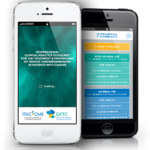CLINICAL TOOLS
CALCULATORS
CAT score: Clinical prediction model for cancer-associated thromboembolism
This risk score, which was developed and externally validated by Pabinger and colleagues, estimates the likelihood of developing venous thromboembolism (VTE) in cancer patients based on the type of cancer and D-dimer levels.1
1 Pabinger et al. Lancet Haematol 2018. 5: e289–98.
Khorana score predictive for chemotherapy-associated VTE
The Khorana score was developed for VTE risk assessment in patients receiving chemotherapy.1 The model is based on five predictive variables identified in a multivariate model:
1) Site of cancer
2) Platelet count ≥ 350 X 109/L
3) Hemoglobin < 10g/dL and/or use of erythropoiesis-stimulating agents 4) Leukocyte count > 11 X 109/L
5) Body mass index (BMI) ≥ 35Kg/m2
The Khorana score was externally validated in the Vienna CATS study2 and other studies.3,4 However, its reproducibility has been questioned for certain cancer patient populations.5-7 Several variations of the Khorana risk score have been developed to optimize risk assessment, including the extended Vienna CATS Score,8 the PROTECHT,3 and the CONKO score.4
| The Khorana score | |
|---|---|
| Patient characteristic | Risk score |
| Site of cancer | |
| Very high risk (stomach, pancreas) | 2 |
| High risk (lung, lymphoma, gynecologic, bladder, testicular) | 1 |
| Platelet count ≥ 350 X 109/L | 1 |
| Hemoglobin < 10g/dL and/or use of erythropoiesis-stimulating agents | 1 |
| Leukocyte count > 11 X 109/L | 1 |
| Body mass index (BMI) ≥ 35Kg/m2 | 1 |
Risk of chemotherapy-associated VTE:
0, low
1-2, intermediate
≥ 3, high
1 Khorana et al. Blood 2008. 111: 4902–07
2 Ay et al. Thromb Haemost 2017. 117: 219–30.
3 Verso et al. Intern Emerg Med 2012. 7: 291–92.
4Pelzer et al. Dtsch Med Wochenschr 2013. 138: 2084–88 (in German).
5 van et al. Haematologica 2017. 102: 1494–501.
6 Mansfield et al. J Thromb Haemost 2016; 14: 1773–78.
7 Bezan et al. PLoS One 2017. 12: e0176283.
8 Ay et al. Blood 2010. 116: 5377–82.
RIETE risk score for major bleeding within three months of anticoagulant therapy
This bleeding risk score was developed using the RIETE registry of patients with acute VTE.1 Six independent risk factors were identified with multivariate analysis:
1) Age >75years
2) Recent bleeding
3) Cancer
4) Creatinine levels > 1.2mg/dl,
5) Anemia
6) Pulmonary embolism at baseline
| RIETE bleeding score | |
|---|---|
| Risk factor | Points |
| Age > 75 years | 1.0 |
| Recent bleeding | 2.0 |
| Cancer | 1.0 |
| Creatinine > 1.2 mg/dL | 1.5 |
| Anemia | 1.5 |
| PE vs DVT index event | 1.0 |
Risk of major bleeding:
0, low
1-4, intermediate
> 4, high
1Ruíz-Giménez N. Thromb Haemost 2008. 100(1): 26–31.
VTE bleed risk score
The VTE-BLEED model1 was developed to predict the risk of bleeding in patients with venous thromboembolism (VTE) receiving long-term anticoagulation (Dabigatran or Warfarin). In a recent prospective study of 1034 patients with VTE treated with DOAC, including 164 (15.8%) patients with active cancer, the VTE-BLEED demonstrated a good predictive value.2
This score includes six variables:
- Active cancer
- Male patients with uncontrolled hypertension
- Anemia
- History of bleeding
- Age ≥ 60 years
- Renal dysfunction [CrCl 30-60 mL/min]).
| VTE-BLEED | |
| Patient characteristic | Risk score |
| Active cancer | 2 |
| Male patient with uncontrolled hypertension | 1 |
| Anaemia | 1.5 |
| History of bleeding | 1.5 |
| Renal dysfunction (creatinine clearance 30–60 mL·min−1) | 1.5 |
| Age ≥60 years | 1.5 |
VTE-BLEED score
< 2, Low bleed risk
> 2, High bleed risk
1 Klok FA. Prediction of bleeding events in patients with venous thromboembolism on stable anticoagulation treatment. Eur Respir J 2016. 48(5):1369–1376.
2 Vedovati MC. Prediction of major bleeding in patients receiving DOACs for venous thromboembolism: A prospective cohort study. Int J Cardiol 2020. 301: 167-172.




